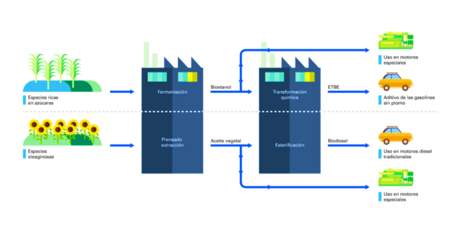
Laboratory Technician
Bioengineering and Chemical Engineering Department

Magnetic levitation is a physical phenomenon in which an object is suspended in the air by the action of magnetic forces that counteract the force of gravity. This is achieved by using magnets to generate a magnetic field that interacts with the object’s magnetic field, creating a repulsive force that keeps the object in a stable position, without physical contact with any surface.
In the context of magnetic levitation, chemical engineering focuses on the design and optimization of materials used in levitation systems to improve their efficiency, stability and durability. This includes the development of superconducting and magnetic materials with specific properties that are compatible with the requirements of magnetic levitation systems. Chemical engineering is also responsible for the synthesis, processing and manufacture of these materials on a commercial scale, as well as the application of coatings and coatings to protect materials against corrosion and wear. In short, chemical engineering plays a crucial role in the research and development of advanced materials for magnetic levitation, thus contributing to its application in a variety of fields, such as transport, medicine and scientific research.
Historically, magnetic levitation has been driven by advances in various fields, including chemical engineering in the synthesis and optimization of key materials. Below are some relevant historical milestones from the point of view of chemical engineering in relation to materials used in magnetic levitation:
1933 – Discovery of the Meissner-Ochsenfeld Effect: Walther Meissner and Robert Ochsenfeld discovered the Meissner-Ochsenfeld effect, which describes the expulsion of the magnetic field of a superconductor in a superconducting state. This phenomenon is fundamental to magnetic levitation and has been the subject of research in chemical engineering to better understand superconductors and their properties [1].
1986 – Discovery of High Temperature Superconductors: Researchers Johannes Georg Bednorz and Karl Alexander Müller discovered high temperature superconductors (HTS), ceramic materials that exhibit superconductivity at relatively high temperatures. This discovery opened up new possibilities for magnetic levitation and stimulated research in chemical engineering to synthesize and optimise these materials [2].
1984 – Development of the First Maglev Trains: In Japan, the first magnetic levitation trains (Maglev) were introduced using liquid nitrogen-cooled superconductors to achieve levitation. This milestone led to increased attention in chemical engineering towards the production and optimisation of high-temperature superconductors for practical applications [3].
In the process of advancing on materials several manufacturers and companies of superconducting materials were established to produce and develop related technologies, which drove research in chemical engineering to improve the manufacturing and properties of superconducting materials. Some notable companies and organizations that have been involved in the manufacture and development of superconductors (IBM, General Electric, SIEMENS, SuperPower Inc, American Superconductor Corporation AMSC).
During this decade, there were significant advances in the synthesis and characterization of magnetic nanomaterials for magnetic levitation applications. A team of scientists from the University of Waterloo (Ontario) led by Professor Mir Behrad Khamesee has developed a small robot that can fly thanks to a clever use of magnetism [4]. Chemical engineering played an important role in the design and optimization of these materials to improve their stability and performance in levitation systems.
Currently, research in chemical engineering continues to focus on the development of new superconducting and magnetic materials, as well as improving manufacturing processes and understanding the underlying mechanisms to advance magnetic levitation and its applications.
Bibliographical references
- Sánchez Cornejo, H. E. “Fabricación y caracterización de películas Superconductoras de YBa2Cu3O7 depositadas sobre el sustrato YSZ, mediante la técnica de Deposición Química” pp. 9 2015. [Online]. https://cybertesis.unmsm.edu.pe/bitstream/handle/20.500.12672/4495/S%C3%A1nchez_ch.pdf [Accessed: 27 -feb-2024]
- Pérez, F. E. S. L. “Los superconductores. Antena de telecomunicación”, 185, 18-26 2012. [Online]. https://www.academia.edu/download/40552764/04c_Superconductores.pdf [Accedido: 27 -feb-2024]
- Burgos, G. P., Lema, K. L., Macías, M. P. M., Vera, A. M., & Rezabala, D. Z. “Análisis Del Desarrollo Tecnológico De Japón En El Ecuador. Observatorio Iberoamericano de la Economía y la Sociedad del Japón”, (31) 2017 [Online]. https://www.eumed.net/rev/japon/31/japon-ecuador-tecnologia.zip [Accedido: 27 -feb-2024]
- “Nano Robot por Levitación Magnética”, 2009. https://www.tecnologianano.com/nanorobot-por-levitacion-magnetica/ [Accessed: 27 -feb-2024]




